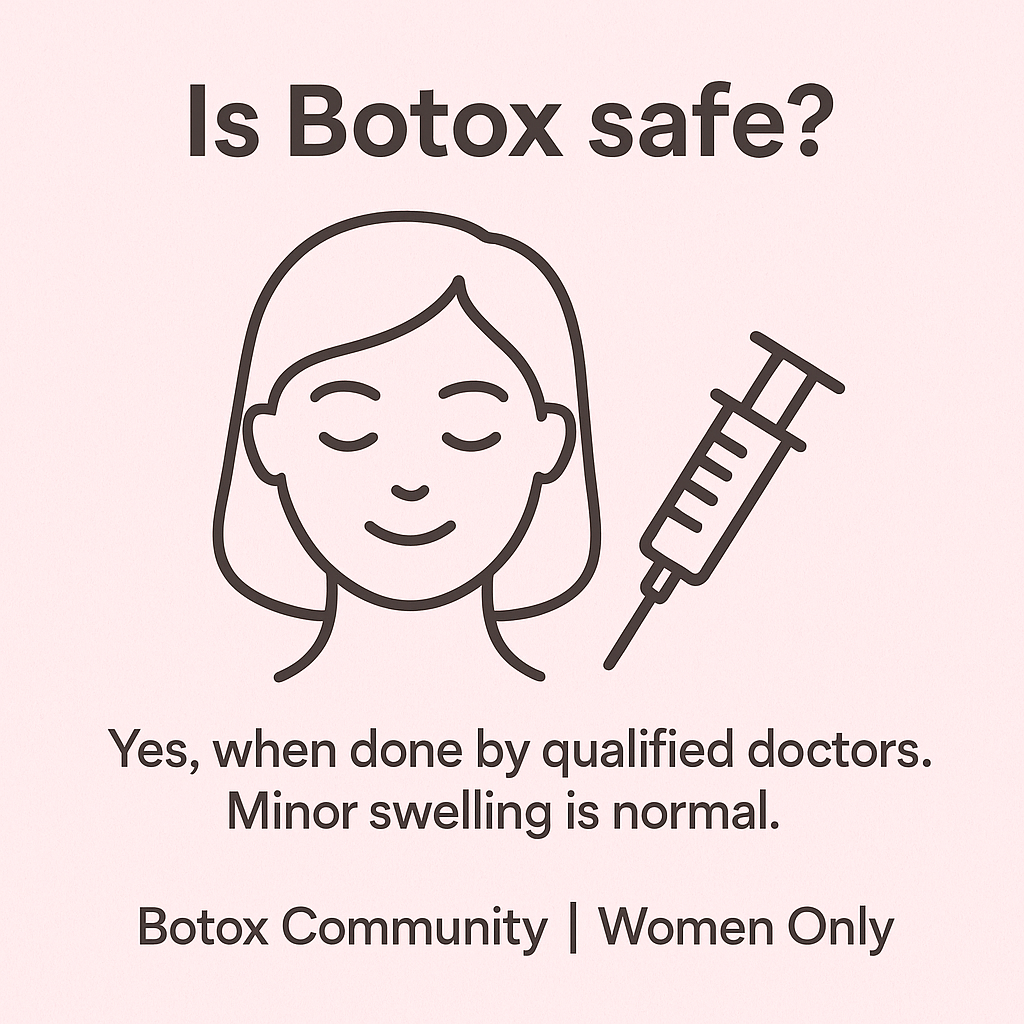1) What is Botox and what does it treat?
Answer: Botox is a prescription form of botulinum toxin-A injected in tiny amounts to temporarily relax targeted facial muscles. It’s most commonly used for frown lines, forehead lines, crow’s feet and certain medical indications (migraine, hyperhidrosis).
2) How does Botox work and when will I see results?
Answer: Botox blocks nerve signals to the injected muscle so it relaxes, softening dynamic wrinkles. Most people notice effects within 3–7 days, with full effect by ~2 weeks.
3) How long do results last?
Answer: Typical cosmetic benefit lasts 3–6 months depending on the area, dose, and individual metabolic factors. Repeat treatments are required to maintain results.
4) Is Botox safe — what are the common and rare side effects?
Answer: When performed by a trained medical professional, Botox is generally safe. Common transient side effects: mild bruising, redness, local swelling, headache, or temporary droop (ptosis). Rare complications (misplaced diffusion, significant eyelid/eyebrow ptosis) can occur — which is why experienced injectors and correct technique matter.
5) Will I lose facial expression or look “frozen”?
Answer: Not if dosed correctly. Dermatologists aim to weaken — not paralyze —target muscles so patients retain natural expression. Good injectors use conservative dosing and follow-up adjustments.
6) Does Botox hurt and is there downtime?
Answer: Injections are quick and usually described as mild pinches. Many clinics offer topical numbing. Downtime is minimal — most people return to normal activities immediately, though providers recommend avoiding heavy exercise, alcohol and lying flat for a short period after treatment to reduce bruising and migration risk.
7) How much does Botox cost in India (and Bangalore)?
Answer: Prices vary by city, clinic reputation and units used. India clinic reports commonly show per-session costs in the ₹5,000–₹20,000 range depending on treated areas and number of units; premium providers and branded product usage push rates higher. Always ask for units used, brand (onabotulinumtoxinA/Dysport/Xeomin) and itemized pricing.
8) Can I have Botox if I’m pregnant, breastfeeding or planning pregnancy?
Answer: Most experts advise against Botox during pregnancy and breastfeeding due to limited safety data. Women trying to conceive should discuss timing with their clinician. If exposure occurs inadvertently, discuss with your doctor — published data are limited and cautious guidance is recommended.
9) What’s the difference between Botox and fillers?
Answer: Botox is a neuromodulator that relaxes muscles (best for dynamic wrinkles). Dermal fillers (hyaluronic acid, etc.) add volume to static folds, cheeks, lips and under-eye hollows. The two are complementary and sometimes combined in a treatment plan. Ask your provider which is right for your concern.
10) Who should perform Botox injections — how do I pick a clinic/practitioner?
Answer: Seek a licensed dermatologist, plastic surgeon, or trained physician with documented experience in facial injectables. Ask about: formal credentials, how many Botox procedures they perform weekly, before/after photos, exact product/units used, and complication management protocols. Avoid non-medical “salon” injectors.
